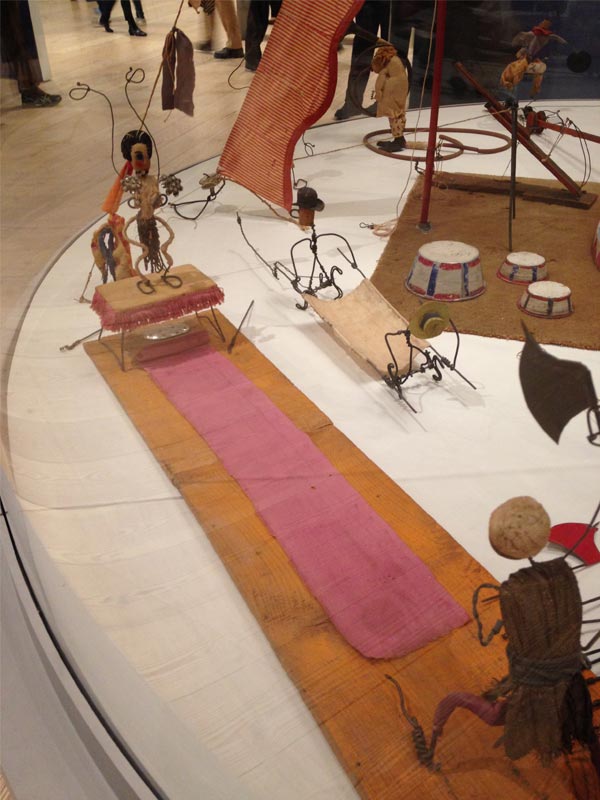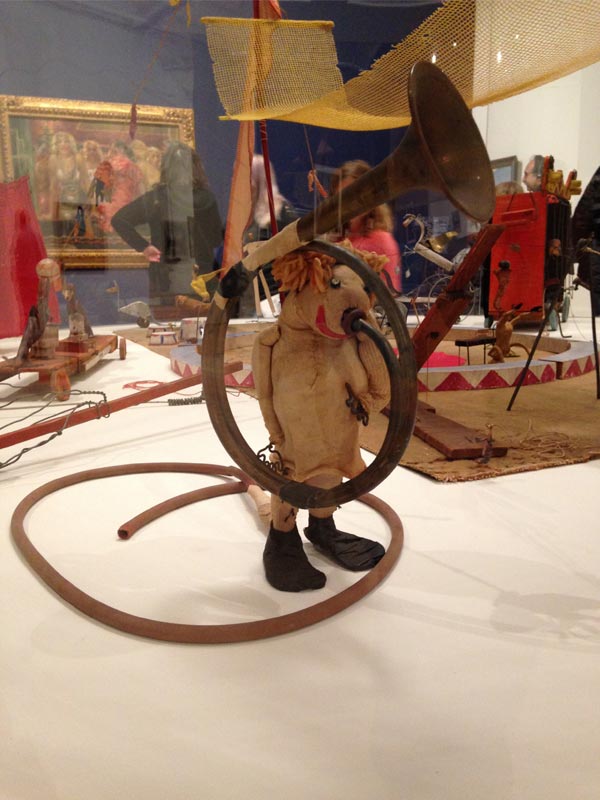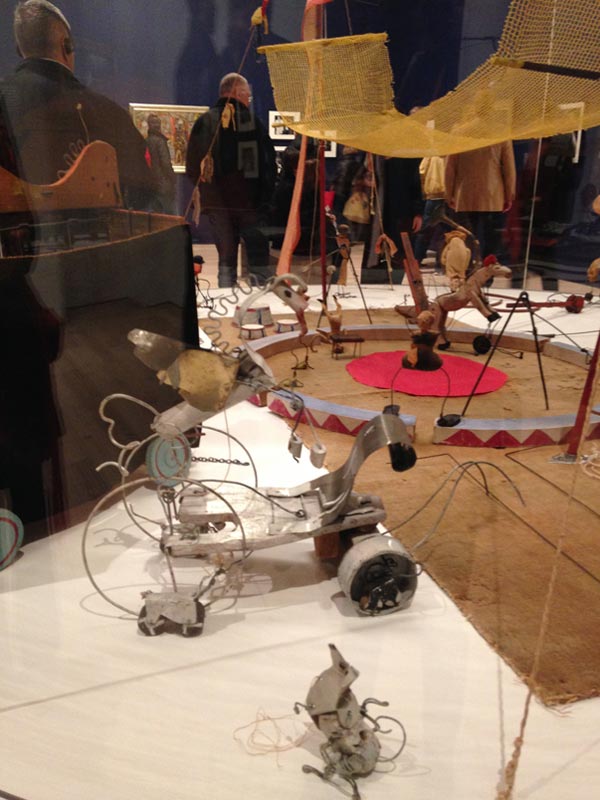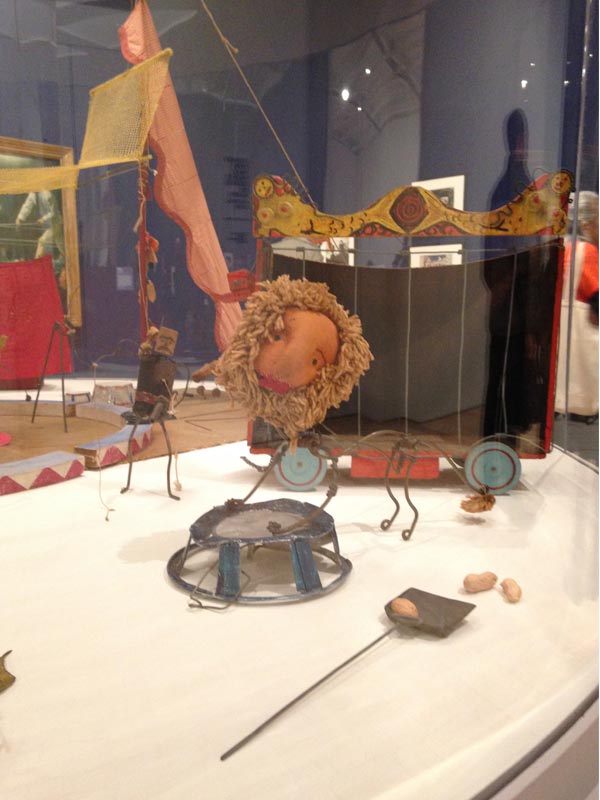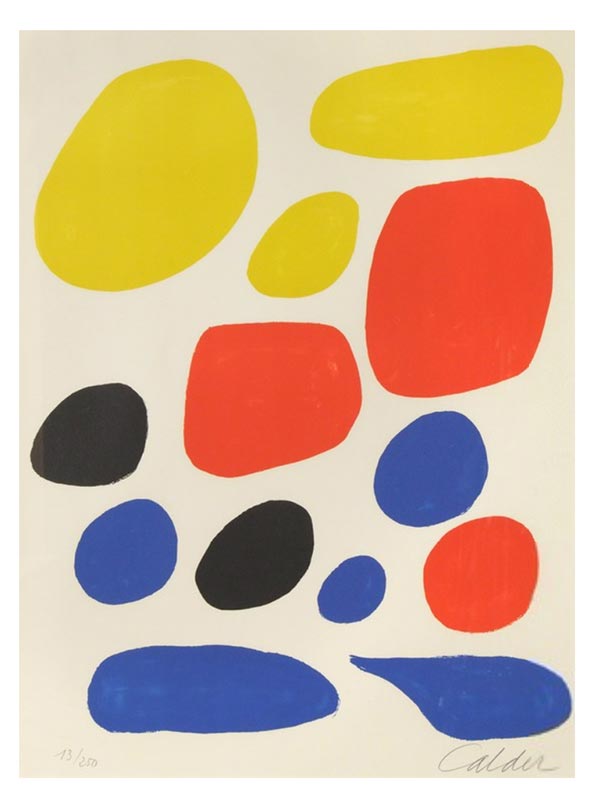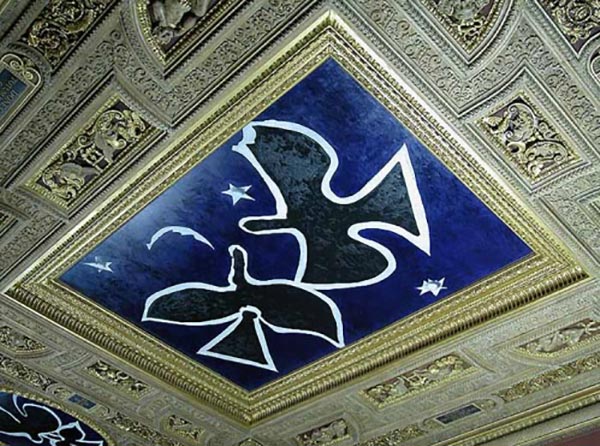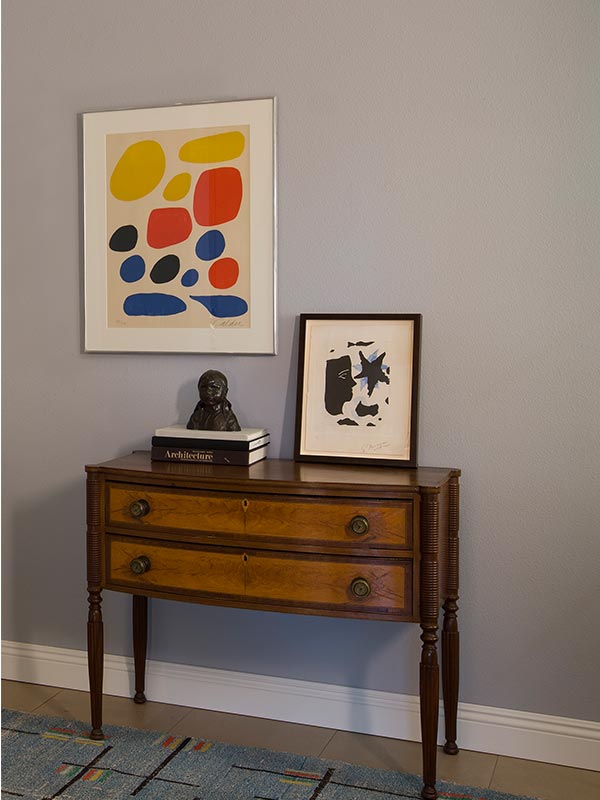As a child Alexander Calder was fascinated with the circus. And who didn’t like the circus as a child; I know I did! But his interests went much further than mine. As an adult he became a classically trained and practicing artist in New York. His small-scale model of a Circus made from wire, wood, cloth, leather string and other materials, is currently in the Whitney Museum and shows how he used these materials to essentially create three-dimensional people, animals, and objects. These three-dimensional figurative drawings eventually became one of the things that Calder is most known for, mobiles. While in New York I was lucky enough to see the installation of Calder’s Circus.





The color Lithograph used in this Vignette is titled “Flight” and contains the yellow, blue, red, and black colors Calder is known for.


A prolific artist, Braque stenciled letters onto paintings, blended pigments with sand, and copied wood grains and marbles to achieve great levels of dimension in his paintings. Throughout his career he worked in several styles, starting out as an Impressionist, evolving into a Fauvist, and working with Picasso to develop Cubism. The smaller piece, “Tête en profil et l’étoile” (Profile and Star Head, for those who don’t speak French) is an etching and aquatint in colors done in 1960, three years before his death. It repeats both his use of the colors blue, white and black and the night sky imagery.

In the room I wanted to continue using the same colors from both Calder’s and Braque’s works. I found this very groovy Mondrian inspired vintage Swedish Rug and used that to tie in the furnishings with the art. From there I add a French inspired wing chair upholstered in white Alpaca, (so soft and cuddly). For a pop of color, I used a red lacquer side table and a yellow lumbar pillow.

To balance out the more modern pieces, I used an antique sideboard with crotch mahogany and inlay on the drawers. And another beautiful piece of art, a bronze bust, “Womboli” or Little Eagle, an American Indian by A. A. Weinman sits atop the sideboard.




